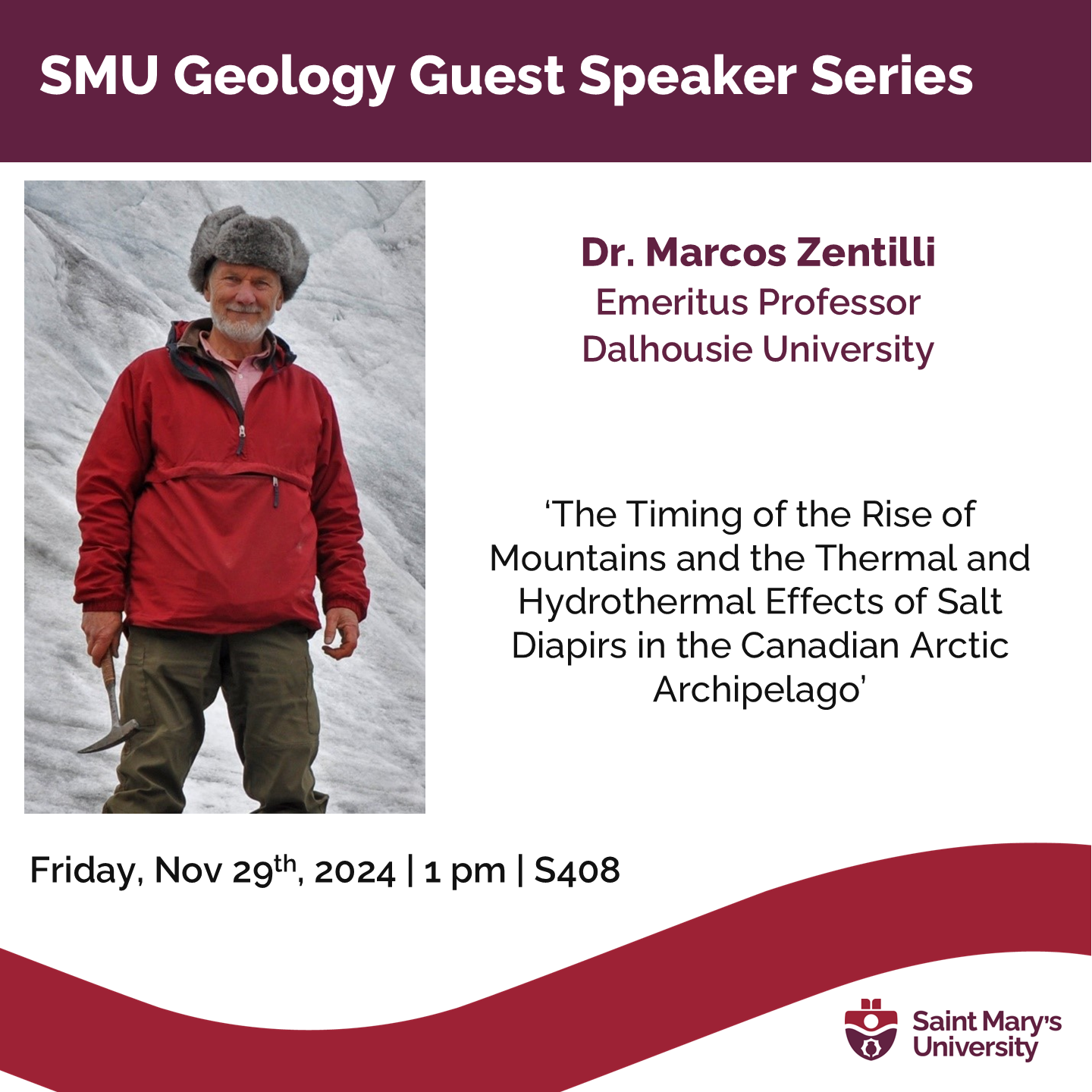SMU Geology Guest Speaker Series: Dr. Marcos Zentilli of Dalhousie University

Location: Science Building - S408
Dr. Marcos Zentilli became a geologist in Chile and received a PhD from Queen’s University in Kingston, Ontario. He retired in 2005 as Emeritus Professor at Dalhousie University, where he taught and did geological research in Atlantic Canada, the Canadian Arctic and the Andes of South America. He has directed more than 40 MSc and PhD theses and has published extensively on Andean and Canadian economic geology. He has received the Gesner Medal from the Atlantic Geoscience Society (2016), the highest medal from the College of Geologists of Chile (2023), and the Queen Elizabeth II’s Platinum Jubilee Medal (2022).
'The Timing of the Rise of Mountains and the Thermal and Hydrothermal Effects of Salt Diapirs in the Canadian Arctic Archipelago'
Abstract:
- Eastern Nunavut has a mountain range with elevations of up to 2600 m. It formed when Greenland collided with Nunavut in the Eocene. We figured out when the mountains rose using a high-power optical microscope, with the method called Apatite Fission-Track Low-Temperature Thermochronology.
- Our research was funded to ascertain why 9 oil wells in Ellesmere Island were dry, whereas farther west in the same basin they were successful; the reason was that the petroleum system in this region was overheated by thrust tectonics and by igneous intrusions.
- These mountains at Latitude 80°N rose during a very warm (+20°C) and rainy period, an ice-free time in the Arctic Ocean when forests developed, populated by animals that today live in the sub-tropics.
- Salt diapirs capped by anhydrite and gypsum rose plastically to the surface from a mother bed at 13 km depth. Our work indicates they are still rising. Salt diapirs conduct earth heat better than most rocks, and their paleo thermal anomalies are measurable using Thermochronology.
- Perennial springs associated with diapirs emit brines at 5°C year round, in a region with 600 m deep permafrost. Originally interpreted to be surficial and periglacial phenomena, we discovered that the perennial springs have deep precursors that carried hydrothermal fluids at up to 300°C.
Note: This research currently involves collaboration with Christopher Omelon and Laura Thomson of Queen’s University in Kingston, and Jacob Hanley of Saint Mary’s University in Halifax.